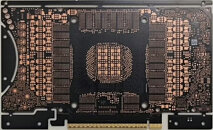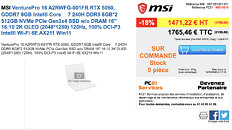
NVIDIA RTX PRO 6000 GDDR7 Memory Comes in 3 GB Modules, Sandwiching the PCB on Both Sides
NVIDIA has significantly advanced professional graphics by rebranding its workstation lineup as "RTX PRO" and incorporating an amazing 96 GB of GDDR7 memory capacity into a single RTX PRO 6000 card. This marks the first time 3 GB GDDR7 modules have been employed in a workstation GPU, each supporting error-correcting code for enhanced reliability. By arranging 16 such modules on each side of the PCB, NVIDIA achieves the remarkable 96 GB capacity while maintaining a TDP limit of 300 W for its Max-Q variant (pictured below) and up to 600 W for other SKUs. A recent leak on the Chiphell forum provides a clear insight into the new PCB layout. The customary 12 V-6×2 power connector has been omitted and replaced by four solder points intended for a cable extension.
This design choice suggests preparation for both Server and Max-Q editions, where power inputs are relocated to the rear of the card. Despite the simplified power interface and reduced footprint, the Max-Q model retains the full GB202 Blackwell GPU and the complete memory capacity. At the top of the series, the RTX PRO 6000 Blackwell will be offered in three distinct configurations. The Workstation and Server editions feature 24,064 CUDA cores, 96 GB of GDDR7 ECC memory, and a 600 W power budget, ensuring consistent performance in desktop towers and rack-mounted systems. The Max-Q edition employs the identical GPU and memory configuration but limits power consumption to 300 W through lower clocks and power limits, making it particularly well suited for compact chassis and noise-sensitive environments.
This design choice suggests preparation for both Server and Max-Q editions, where power inputs are relocated to the rear of the card. Despite the simplified power interface and reduced footprint, the Max-Q model retains the full GB202 Blackwell GPU and the complete memory capacity. At the top of the series, the RTX PRO 6000 Blackwell will be offered in three distinct configurations. The Workstation and Server editions feature 24,064 CUDA cores, 96 GB of GDDR7 ECC memory, and a 600 W power budget, ensuring consistent performance in desktop towers and rack-mounted systems. The Max-Q edition employs the identical GPU and memory configuration but limits power consumption to 300 W through lower clocks and power limits, making it particularly well suited for compact chassis and noise-sensitive environments.









































































